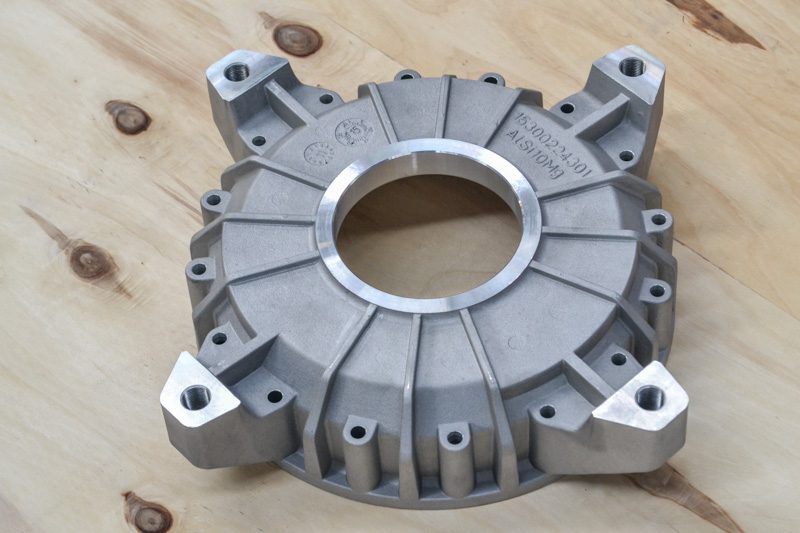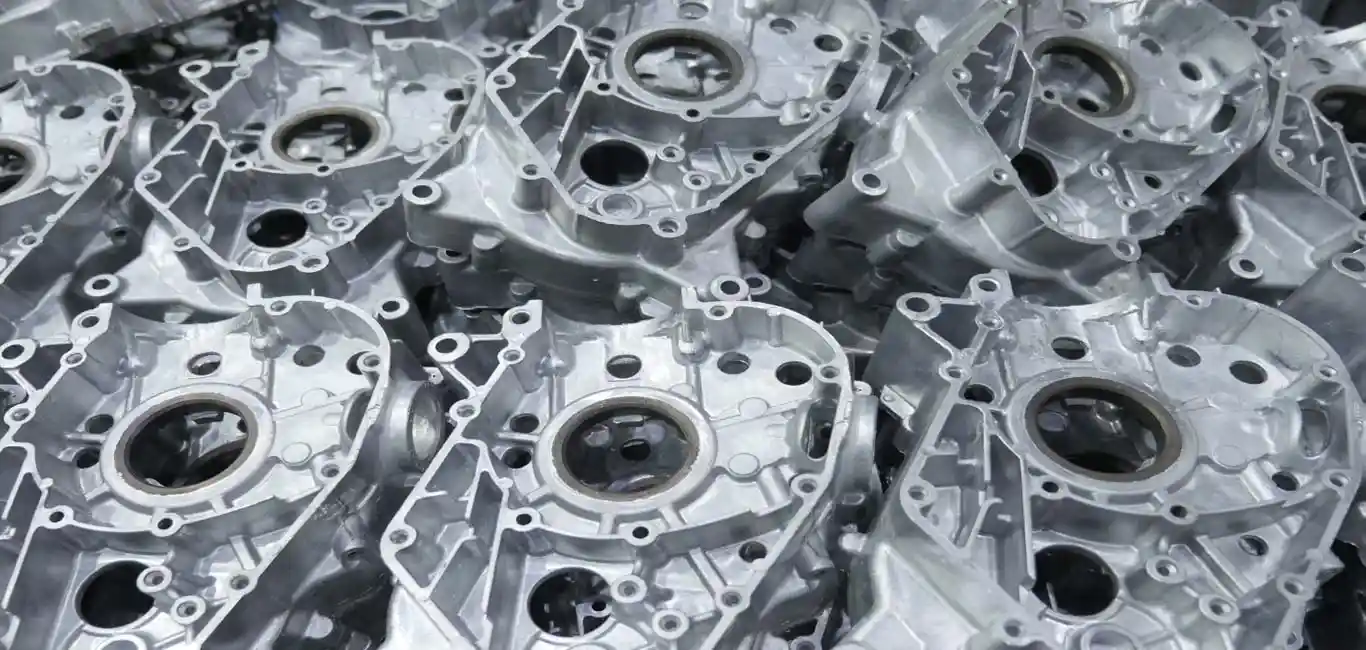How precision Metal Castings help better engineering results
Everything About Aluminum Castings: Understanding Their Function and Significance in Manufacturing
Aluminum spreadings are indispensable to modern-day manufacturing, using a mix of light-weight buildings and toughness. They help with intricate styles while reducing setting up expenses. Industries such as automotive and aerospace frequently utilize these parts for enhanced performance. The manufacturing of aluminum spreadings is not without its difficulties. Understanding the subtleties of this procedure exposes both the advantages and prospective pitfalls. Discovering these elements will certainly supply deeper understandings right into their growing importance.
Overview of Aluminum Spreading Processes
Light weight aluminum casting procedures play a necessary role in manufacturing, supplying flexibility and efficiency. These processes include putting liquified aluminum right into molds to develop accurate forms and components. Various techniques are utilized, including sand casting, pass away spreading, and financial investment spreading, each identified by its method of mold development and the intended application.
Sand casting uses a mixture of sand and binder to form molds, permitting for complicated geometries. Pass away casting, on the various other hand, involves forcing molten aluminum into metal molds, resulting in high accuracy and smooth surfaces. Financial investment casting, typically utilized for detailed styles, involves producing a wax pattern covered with a ceramic shell, which is then loaded with liquified light weight aluminum.
These casting methods deal with diverse industrial needs, making light weight aluminum a preferred material for parts in fields such as automobile, aerospace, and durable goods. The choice of casting method significantly affects the last item's high quality and efficiency.
Benefits of Making Use Of Light Weight Aluminum Castings
The advantages of using light weight aluminum spreadings in manufacturing are considerable and many. To start with, light weight aluminum's lightweight nature contributes to minimized general item weight, enhancing energy efficiency in applications such as aerospace and vehicle markets. Furthermore, light weight aluminum castings display exceptional rust resistance, making sure long life and sturdiness in extreme environments. The material's electric and thermal conductivity also makes it suitable for various applications, consisting of electronic devices and warmth exchangers.
Additionally, aluminum spreadings can be produced with complex styles, permitting much more complex forms that fulfill certain practical needs. This adaptability contributes to reduced setting up prices and boosted layout adaptability. In addition, the spreading process itself is reliable, permitting high-volume production with regular high quality. Lastly, aluminum is recyclable, making it an environmentally friendly alternative in manufacturing. Collectively, these benefits highlight why aluminum castings are significantly favored throughout diverse sectors, providing both efficiency benefits and financial performance.
Typical Applications of Light Weight Aluminum Castings
While numerous products are used in production, aluminum castings attract attention due to their broad series of applications across several markets. These castings are extensively made use of in the auto market for engine elements, transmission housings, and structural parts, adding to lighter automobiles and improved fuel efficiency. In the aerospace industry, aluminum spreadings are critical for aircraft parts, where weight decrease is important for performance and safety.
Additionally, the electrical sector employs light weight aluminum castings for real estates and architectural components in machinery, benefiting from the material's outstanding conductivity. In customer goods, aluminum spreadings can be located in items such as home appliances and sporting devices, giving durability and a modern-day aesthetic. In addition, the construction industry makes use of aluminum spreadings in building elements, window frames, and components, showcasing their convenience and toughness. Overall, light weight aluminum castings play an integral duty in improving product performance and performance throughout various markets.
Secret Manufacturing Techniques for Light Weight Aluminum Castings
The production of aluminum castings relies upon various methods, with sand casting and die spreading being amongst the most famous. Sand spreading involves developing molds from sand, enabling for intricate layouts and large elements. In contrast, die casting uses high-pressure injection of molten light weight aluminum into reusable molds, providing precision and efficiency for mass production.
Sand Spreading Process
Sand casting stands as one of one of the most extensively utilized techniques for generating aluminum castings, many thanks to its flexibility and cost-effectiveness. This procedure involves producing a mold and mildew from a mix of sand and a bonding agent, normally clay. As soon as the mold is prepared, liquified light weight aluminum is poured into it, allowing the metal to fill up the tooth cavity. After cooling, the mold and mildew is broken away to expose the spreading. Sand spreading accommodates huge parts and intricate geometries, making it ideal for various applications. Additionally, it enables simple adjustments, allowing makers to adjust designs swiftly. The surface finish may require additional machining for specific applications, making certain the last product fulfills high quality standards.
Pass Away Casting Techniques
Die casting represents an extremely efficient method for generating aluminum spreadings, characterized by its ability to deliver high accuracy and exceptional surface area finish. This technique largely entails compeling molten light weight aluminum right into a mold under high stress, ensuring that intricate forms and fine details are caught precisely. There are two major die spreading methods: warm chamber and cold chamber. Warm chamber die casting is ideal for alloys with low melting factors and allows for faster cycles, while chilly chamber pass away spreading is ideal for high-temperature alloys, calling for separate melting systems. Both approaches boost production prices and minimize material waste, making die casting a preferred selection in markets such as automotive and electronic devices, where sturdiness and dimensional accuracy are extremely important.
Sustainability in Light Weight Aluminum Spreading Production
While the demand for light weight aluminum castings proceeds to grow, producers are significantly prioritizing sustainability in their manufacturing processes. This change is driven by the need to reduce ecological impact and conserve natural sources. Many companies are embracing recycling efforts, using scrap light weight aluminum, which especially lowers power intake and greenhouse gas emissions compared to main aluminum production. In addition, advancements in casting innovations are allowing much more effective usage of products, lessening waste throughout the manufacturing process.
Producers are additionally discovering green options to typical spreading methods, such as 3D printing and progressed mold modern technologies, which help optimize resource use. Aluminum Foundry. Additionally, executing sustainable practices in supply chain monitoring assurances that raw products are sourced properly. Consequently, the aluminum casting market is making strides towards a more sustainable future, aligning with global ecological objectives while fulfilling the increasing need for high-performance light weight aluminum products
Obstacles and Factors To Consider in Light Weight Aluminum Spreading
Light weight aluminum casting presents different difficulties that producers need to browse to assure item stability. Style intricacy can complicate the spreading procedure, bring about possible problems and increased production time. Additionally, keeping strenuous top quality control requirements is necessary to special info fulfill the needs of precision and reliability in finished elements.

Design Complexity Issues
Designing components for aluminum casting offers numerous complexities that engineers must browse to accomplish ideal outcomes. One substantial obstacle is the demand for precise geometry; intricate designs can result in problems in mold and mildew production and raised danger of problems. Additionally, thermal residential properties of aluminum require mindful consideration of cooling prices, as unequal cooling can create warping. Wall thickness variants additionally posture an obstacle, as they can affect flow qualities and structural integrity. Engineers must stabilize layout aesthetic appeals with manufacturability, guaranteeing that attributes such as ribs and fillets are enhanced for strength without making complex the casting procedure. Factors to consider concerning draft angles are essential to promote mold launch, further making complex the layout procedure. These factors jointly highlight the intricacies entailed in aluminum spreading layout.
Top Quality Control Obstacles
Accomplishing top quality light weight aluminum spreadings involves navigating a variety of quality control difficulties that can considerably impact the end product. First, variants in resources make-up can lead to variances in casting residential properties, making it important to guarantee material top quality. Second, Get the facts the spreading process itself is prone to issues, such as porosity and shrinkage, which can compromise architectural integrity. Additionally, temperature control throughout melting and putting is important; variations can cause uneven solidification, impacting dimensional precision. Comprehensive evaluation methods, including non-destructive testing, must be used to recognize flaws early. Lastly, keeping stringent procedure documents and adherence to sector requirements is important for traceability and quality guarantee, highlighting the complex balance required to produce reliable light weight aluminum spreadings in production.
Future Fads in Aluminum Casting Innovation
As producers seek to boost effectiveness and sustainability, developments in light weight aluminum casting technology are arising to meet these needs. One considerable fad is the combination of automation and expert system, which improve manufacturing processes and boost precision in casting operations. These developments minimize human error and maximize resource usage, eventually leading to cost decreases.
Furthermore, the fostering of advanced products and alloys is improving the landscape. New formulations improve performance attributes, such as corrosion resistance and lightweight properties, making aluminum castings a lot more versatile across different sectors.
Lasting practices are getting grip, with an emphasis on recycling and minimizing waste (Wisconsin Aluminum Foundry). Techniques such as 3D printing are also being checked out to produce complicated geometries that were formerly unattainable
Often Asked Questions

How Do Aluminum Castings Contrast to Other Materials?
Light weight aluminum castings use benefits such as light-weight, corrosion resistance, and exceptional thermal conductivity compared to various other materials. They are typically liked for applications calling for longevity and efficiency, specifically in vehicle and aerospace industries.
What Is the Life-span of Light Weight Aluminum Castings?
The lifespan of aluminum castings usually varies from 10 to half a century, relying on environmental conditions, use, and upkeep. Their rust resistance and toughness add noticeably to their lasting performance in numerous applications.
Can Aluminum Castings Be Reused?
Yes, light weight aluminum castings can be reused. The reusing procedure is effective, enabling the healing of light weight aluminum without significant loss of quality, making it a lasting selection in production and minimizing environmental impact.
What Precaution Are Needed During Aluminum Spreading?
During aluminum casting, vital security measures include using proper personal safety devices, making sure proper air flow, preserving devices, using fireproof products, and applying safe dealing with methods for liquified steel to avoid accidents and injuries.
Just How Do Temperature Adjustments Affect Light Weight Aluminum Castings?
Temperature modifications markedly impact aluminum castings by affecting fluidness, solidification prices, and mechanical buildings. Rapid cooling can bring about enhanced brittleness, while progressive air conditioning promotes better structural stability and minimizes the risk of problems.
Pass away casting, on the other hand, involves requiring liquified light weight aluminum right into steel mold and mildews, resulting in high precision and smooth coatings. The production of aluminum castings counts on various strategies, with sand casting and pass away spreading being amongst the most noticeable. Sand spreading stands as one of the most widely used techniques for generating aluminum spreadings, thanks to its versatility and cost-effectiveness. Die spreading represents an see this here extremely reliable approach for generating aluminum spreadings, identified by its capability to supply high accuracy and superb surface area coating. While the demand for light weight aluminum spreadings continues to expand, makers are significantly prioritizing sustainability in their manufacturing procedures.